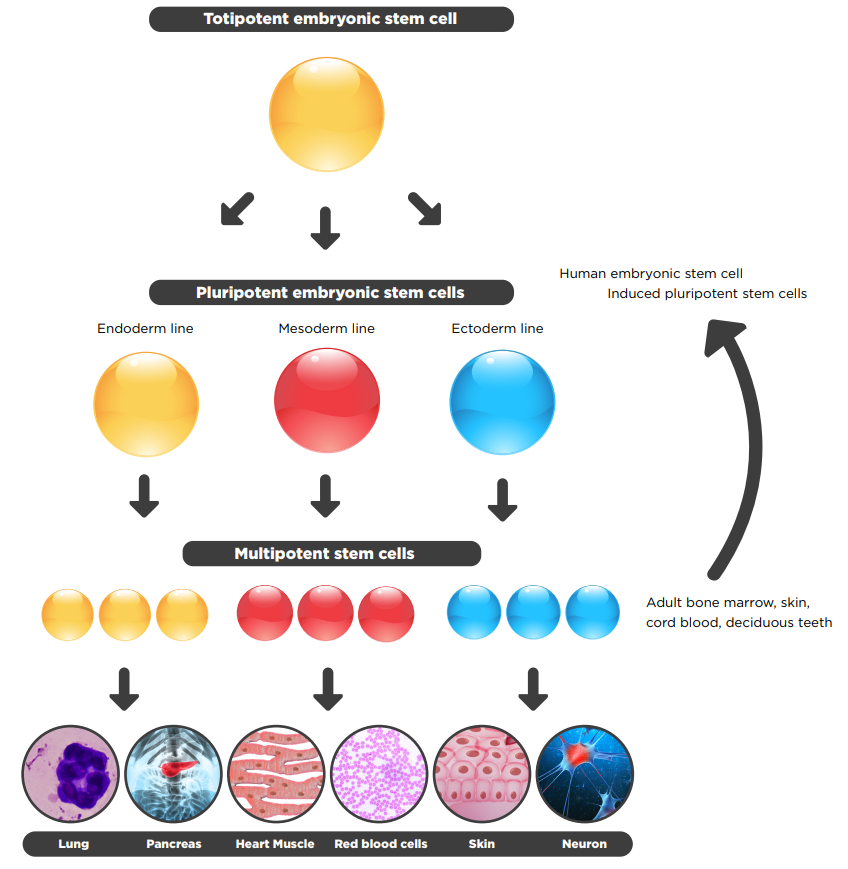Cell Potency: Totipotent vs Pluripotent vs Multipotent Stem Cells

Complete the form below to unlock access to ALL audio articles.
Cell potency refers to the varying ability of stem cells to differentiate into specialized cell types.1 Cells with the greatest potency can generate more cells types than those with lower potency.
Contents
- -Totipotent stem cells
- Pluripotent stem cells
- Multipotent stem cells
Hierarchy of cell potency
Totipotent stem cells
Totipotent (omnipotent) stem cells can give rise to any of the 220 cell types found in an embryo as well as extra-embryonic cells (placenta).
Pluripotent stem cells
Pluripotent stem cells can give rise to all cell types of the body (but not the placenta).
Multipotent stem cells
Multipotent stem cells can develop into a limited number of cell types in a particular lineage.

Credit: Technology Networks
Totipotent vs pluripotent vs multipotent comparison chart
| | Totipotent | Pluripotent | Multipotent |
| Relative potency | High | Medium | Low |
| Cell types capable of generating | Differentiate into any cell type | Differentiate into cells from any of the three germ layers | Differentiate into a limited range of cell types |
| Terminology | Toti = Whole | Pluri = Many | Multi = Several |
| Examples | Zygote, early morula | Embryonic stem cells, Induced pluripotent stem cells | Hematopoietic stem cells, neural stem cells, mesenchymal stem cells |
| Found | Early cells of fertilized egg | Inner mass cells of the blastocyst | In many tissues |
| Expression of pluripotency genes | +++ | ++ | + |
| Expression of lineage-specific genes | + | ++ | +++ |
| Pros of use in research | Easy to isolate and grow | Easy to isolate and grow | Less ethical issues, less chance of immune rejection if taken from same patient |
| Cons of use in research | Ethical issues | Ethical issues, teratoma formation | Hard to isolate, limited differentiation, scarce |
References:
1. Hima Bindu A, Srilatha B. Potency of various types of stem cells and their transplantation. J Stem Cell Res Ther. 2011;1:115. doi: 10.4172/2157-7633.1000115





